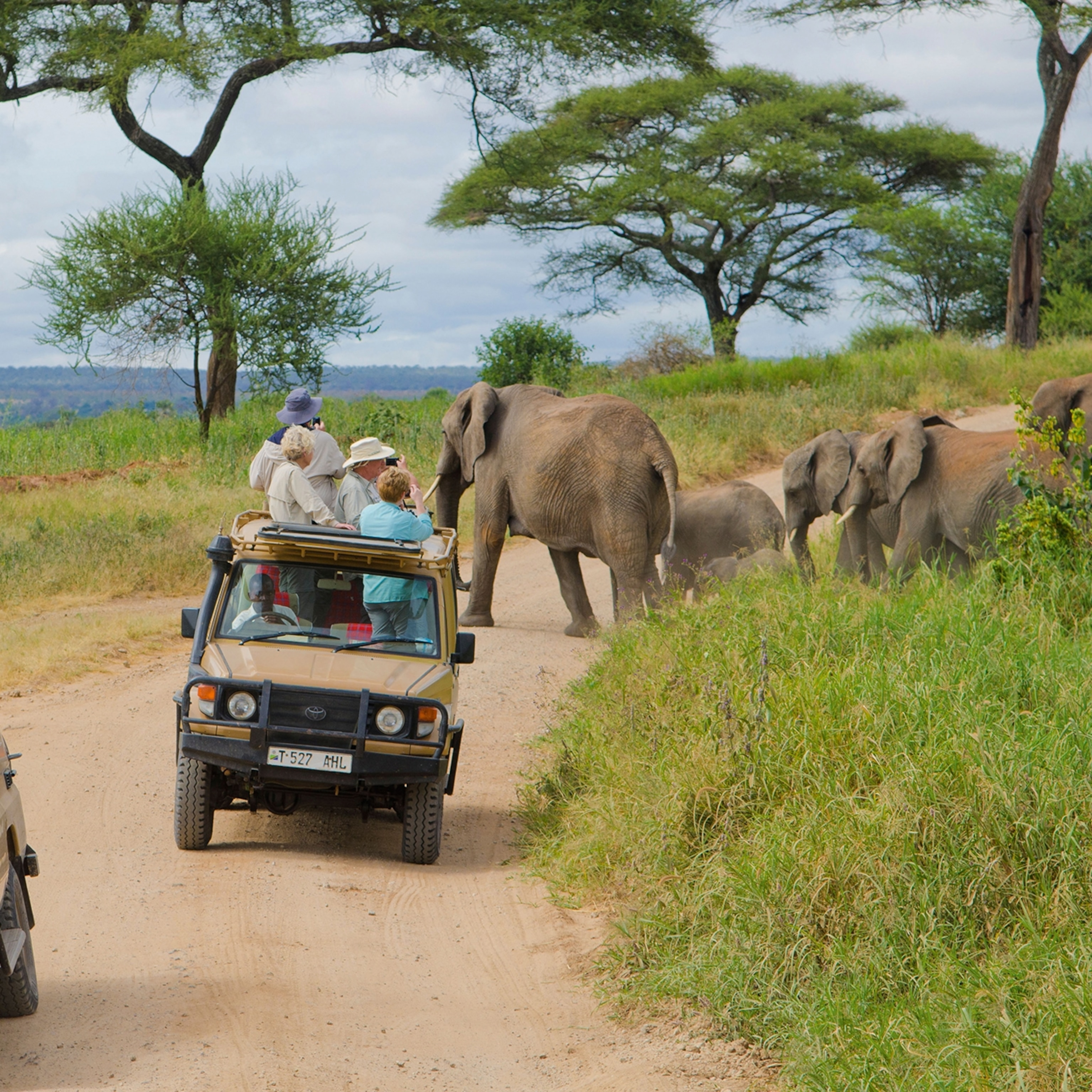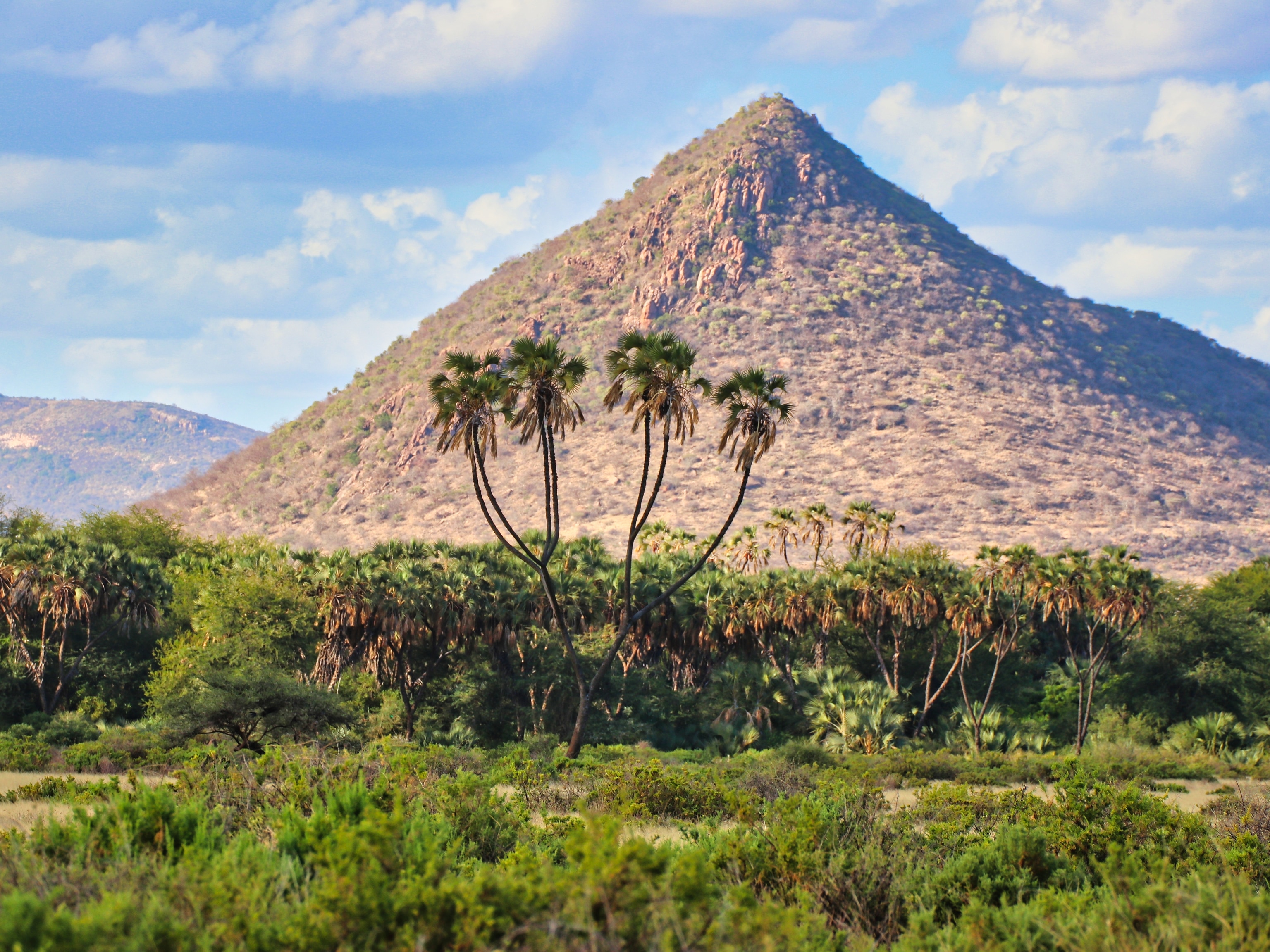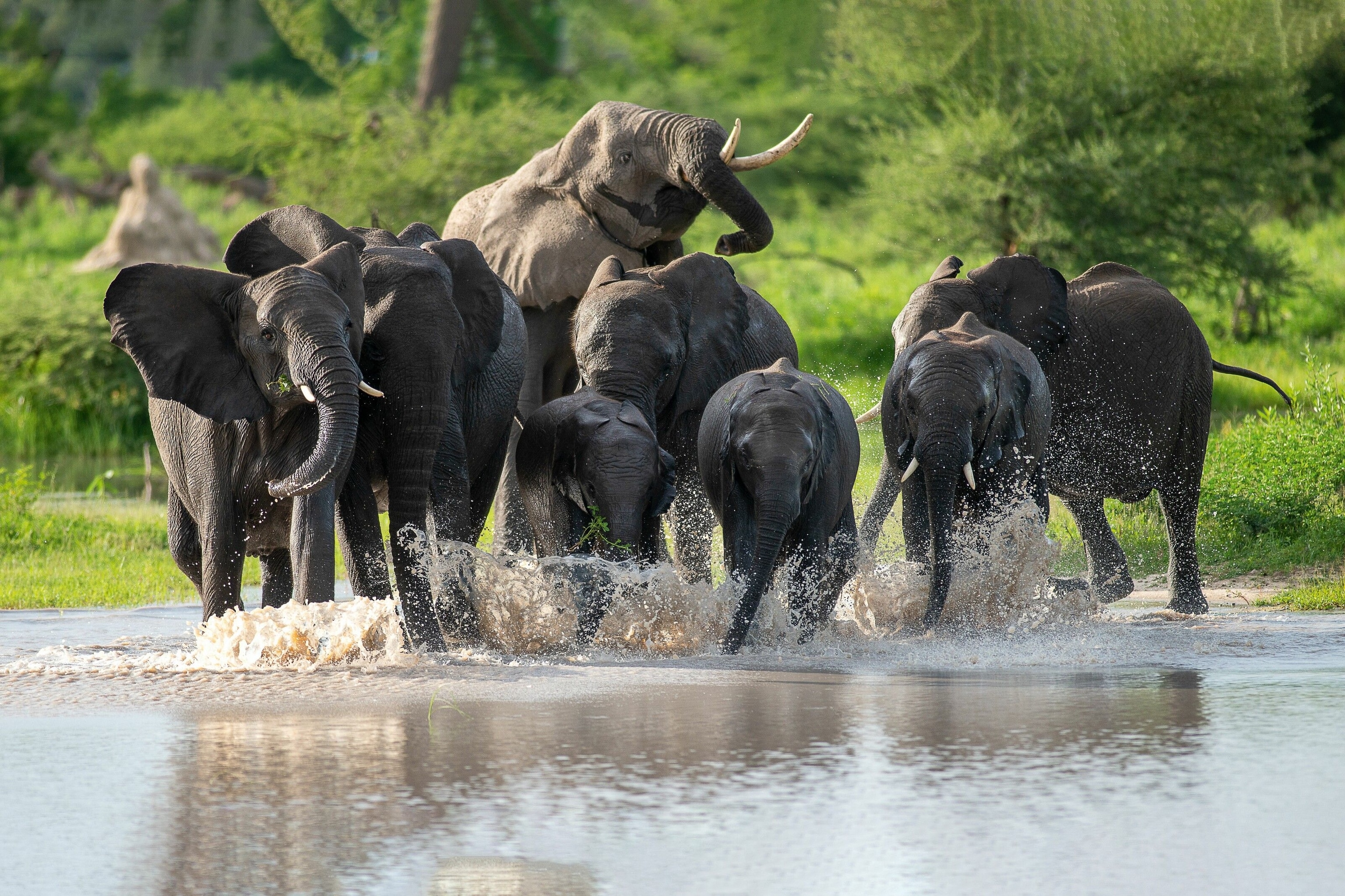
Camping with conservationists in Botswana's Okavango Delta
An Eden for Africa’s most famous species, Botswana’s Okavango Delta offers unrivalled safari experiences, even in its dramatic rainy season.
Bouncing with the updrafts in the back of a single-engine Cessna, I watch the slim shadow of our aeroplane dance across the marbled expanse of the Okavango Delta, some 500ft below.
“If we go down out here,” shouts the pilot, mischief in his voice, “you’ll be near the bottom of the food chain.” We swoop over swamplands and lagoons concealing half-submerged crocodiles and hippos, as the pilot whips the plane into a series of ever-steeper banks and turns. This makes the flight less like the scenic aerial cruise advertised and more like riding a crop duster through a storm, which, in many ways, proves a fitting introduction to my fortnight in northern Botswana.
Revived by recent rain showers, the Kalahari Desert’s shallow clay pools and braided waterways reflect the passing clouds as keenly as quicksilver; the palms and plains are electric-green. It’s a version of the Delta that few travellers see, as most safari guests choose the country’s arid months over this, the tail-end of the long rainy season. We fly lower. Beneath one wing of the bobbing aircraft, a herd of giraffe ambles towards a vast watering hole; beneath the other, wildebeest sprint across emerald brushland. Feeding this oasis is the Okavango River, slicing southwards from Angola, quenching these thirsty lands with myriad tributaries destined to finally peter out and soak away into the sandy earth. En route, the water serves as lifeblood for a menagerie of African species that have earned this region a reputation as one of the richest wildlife enclaves left on Earth.

Despite the hypnotising tranquillity of the landscape from on high, the reality for conservationists at ground level is more fraught. All this beauty balances on a knife edge. Rising global temperatures are threatening the stability of both natural ecosystems and community life in the Okavango. Researchers in Botswana need to know which animals live where, how those populations interact with people, and where potential pressure points are going to appear. And with state-sponsored conservation funding in short supply across the region, they’re increasingly relying on paying voluntourists to help with the manpower needed for data collection.
Back on the ground at Maun International Airport (a generous label applied to a large collection of sun-soaked, single-engine air safari planes and a handful of regional jets), a team from voluntourism outfit African Conservation Experience (ACE) are waiting for me and another incoming volunteer with a four-wheel-drive. We have a three hour, 50-mile trip from Maun into the bush ahead of us. As a donkey-strewn tarmac road crumbles into a rutted, sandy track outside town, the welcome spiel quickly segues into chatter about the stark realities of my visit. “The picture for Botswana is this: the mean temperature is going to rise by 1.5-2C over the next 40 to 50 years,” warns Christiaan Winterbach, an often-shoeless wildlife researcher who has been working in the Okavango Delta since the 1990s.
Though Christiaan specialises in lions, he’s participated in projects that have painted a climate map of the area dating back more than 1,000 years. By studying core samples taken from ancient baobab trees and combining the information with his decades of expertise about the region’s apex predators, Christiaan has been able to connect the dots between water and wildlife. “Rainfall in the Angolan Highlands is predicted to be about 40% of its current level in the next three decades,” he explains, painting a future where wild animals, livestock and humans will compete for water resources. Conservation data collected in the field will play a critical role in striking a new balance.
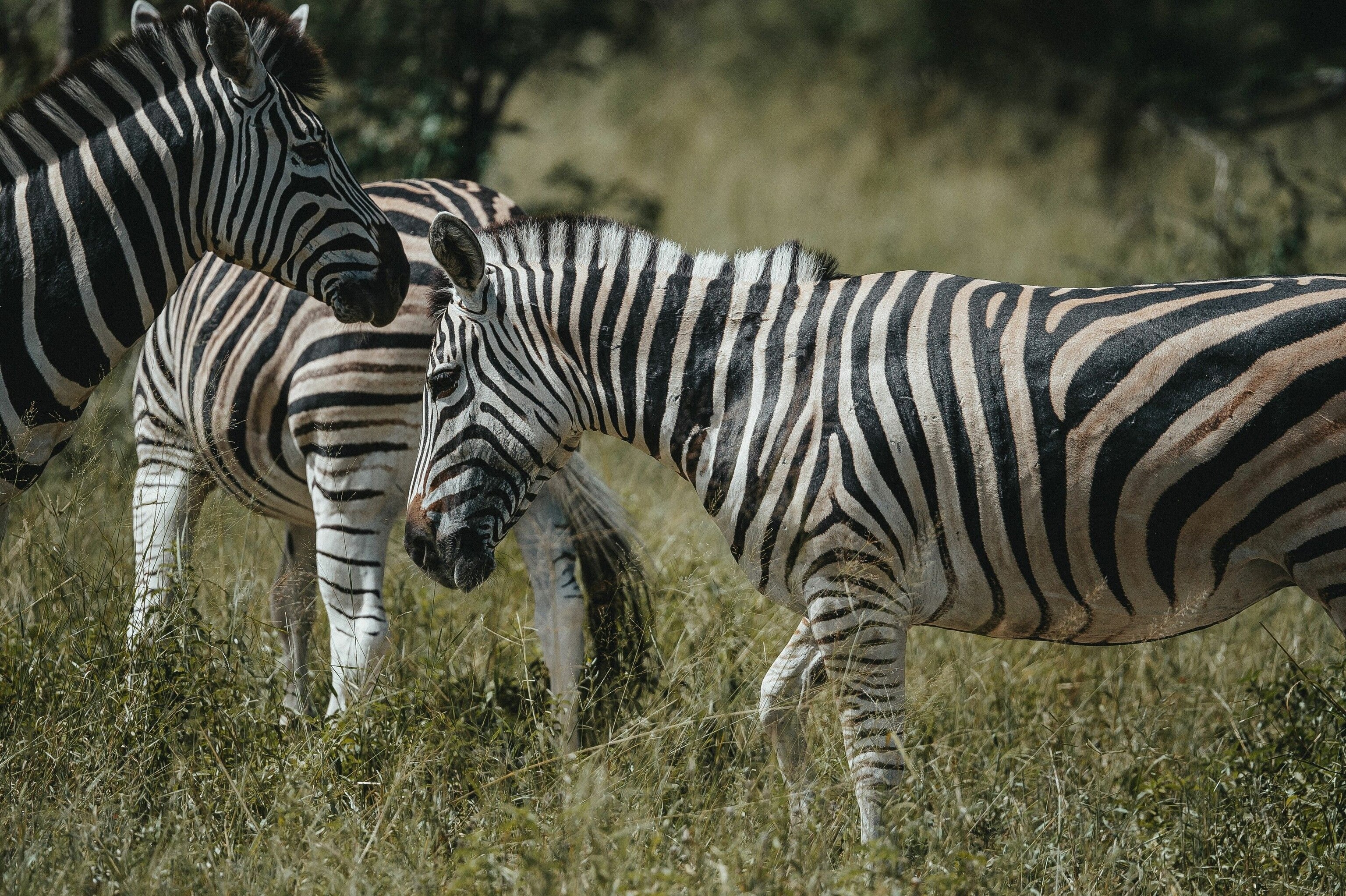
Time to get to work
Four canvas tents. Two porcelain toilets. One makeshift stove powered by propane. We’ve arrived at our home for the next two weeks. “That’s a Mozambique spitting cobra,” booms the voice of our guide, Keitopetse Petros Kagande, by way of a greeting as we pile out of the four-wheel-drive. He’s pointing to a patch of grass through which thin, jet-black coils are rippling. “We almost never see snakes out in the open like this. This is very lucky,” he insists sincerely as we walk the short distance to my bunk.
Our research base sits on the grounds of Mankwe, a luxury safari lodge on the eastern fringe of the Delta that’s partnered with ACE to provide a base camp for voluntourists working with Christiaan. Although guests at Mankwe have access to typical luxury resort amenities, our camp is more spartan. We cook our own food. We take cold showers. We bake our own bread in a fireside hole dug into the soil. In contrast to the plush cabins at the main lodge, our outpost has no wildlife fence — and definitely no swimming pool. Keitopetse takes great pride in telling me we’re the only people camping in an area of 1,300 square miles.
The 42-year-old professional guide grew up in this area, but took a serpentine route to end up in Christiaan’s research team. When a schoolyard bully forced him out of the educational system, Keitopetse was sent to work on a cattle post. Unable to benefit from a traditional education, he learned English in order to translate his bush knowledge, passed down from his parents and grandparents, to Western tourists on safari. The combined skills were enough to enable him to put more food on the table for his family and get his foot in the door with research projects.
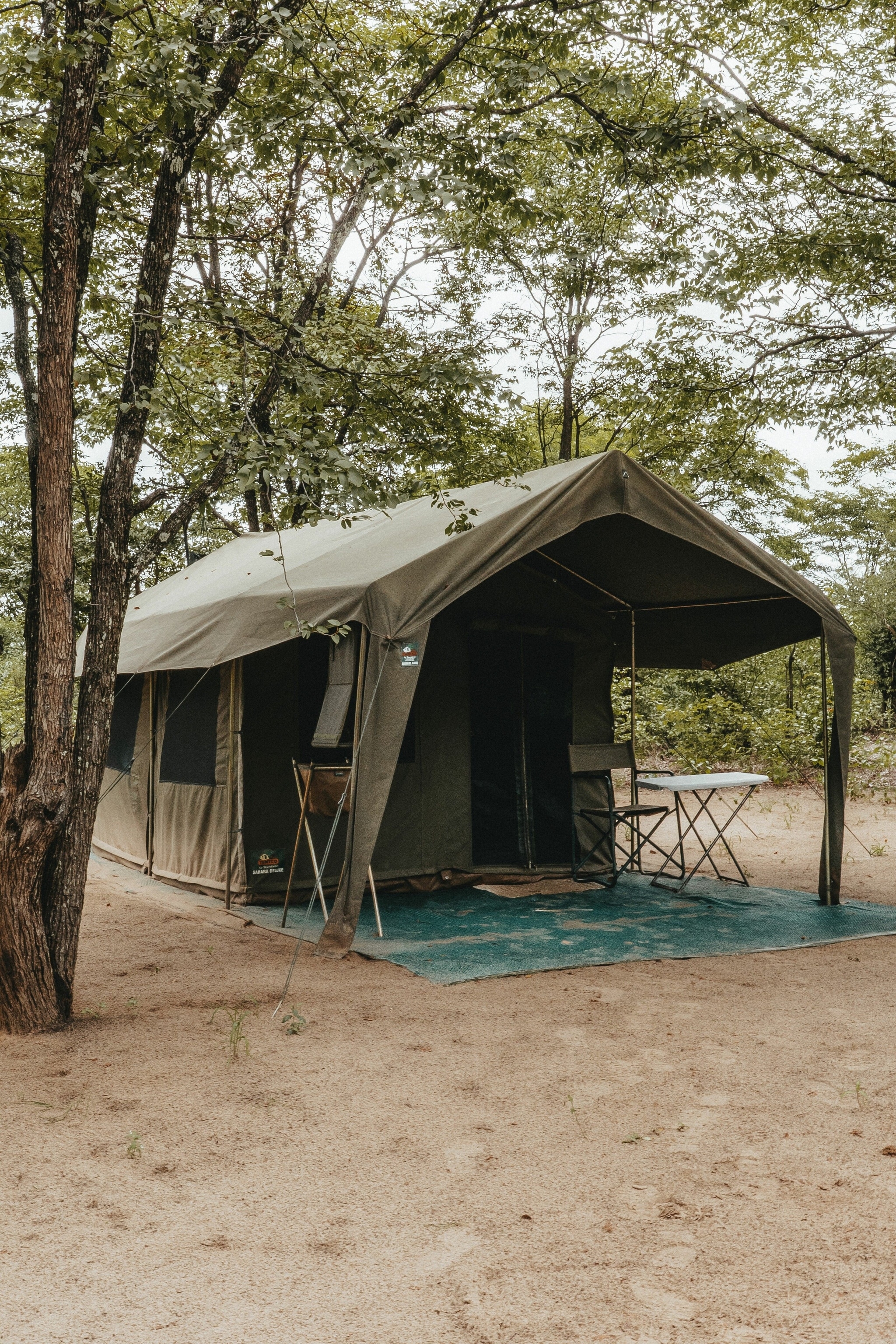
Keitopetse is the leader of our seven-person crew: there’s me, Christiaan, two British voluntourists, a Latvian documentary filmmaker and Tembos Seyamba, a Botswanan tracker who’s Keitopetse’s right-hand man. Our mission is to travel along the rugged roads of the outer Okavango Delta, inching across the terrain while recording animal sightings and predator tracks. Typically, this is done with Keitopetse shouting at us through the open back window of a Toyota Land Cruiser as Tembos keeps a keen eye on the landscape.
It only takes a few days to settle into the routine. At dawn, we fill a lunchbox with apples to snack on and drive to a designated section of dirt road where our data collection begins. With the two Botswanans on point, the rest of the team ride in the back of the truck, learning how to use a rangefinder, identify prints and log data. Key to the mission is a tablet equipped with GPS and logging software that connects our findings with those of the rest of Christiaan’s team. As we drive, the GPS tracks our location. We manually input the species or predator tracks we see. I have a gift for spotting guinea fowl, it transpires, but little else.
Today starts out like any other. While driving along a grass-lined fire road, we spot a secretary bird eating a puff adder, giraffe heads popping up over vegetation, tracks from a long-gone leopard and a wildebeest careening through a shallow pan of glassy water. All animals are logged and will be built into population-map models that help conservationists inform their research.
At each sighting, we learn more about the animals and plants that make this part of the Okavango Delta unique. We eat native plants. We learn the logic behind the behaviour of every animal, and we start to understand how ‘transecting’ — making observations along a predetermined, straight route — is different from your average safari, which has no scientific control applied to its movements.

Although animal encounters are plentiful, Keitopetse refuses to promise us glimpses of Africa’s Big Five — the combination of lion, leopard, elephant, buffalo and rhino that many travellers look to tick off. At high-end safari lodges, teams of guides work together, using radios to swiftly ferry tourists between major sightings, but our group works alone in the bush. And, unlike a conventional safari trip, our guides are not tasked with manufacturing wildlife encounters for us. The research comes first, and what we don’t see is as important for the data as what we do see.
As we crunch through another box of breakfast apples, Keitopetse slows the Land Cruiser to a halt on a sandy stretch of road lined by low mopane trees. “Here,” he says, pointing. “Lion tracks.” For days, we’d scoured massive swathes of brushland in search of signs like this. “They’re fresh.”
The sight of recent prints is enough to send our crew into an uproar. The voluntourists bound out from the back of the Land Cruiser; we have to get close to the ground for Keitopetse to teach us how to identify prints. I snatch up the tablet to log the place where lion paws recently lingered. GPS coordinates, estimated age and gender, and time of the sighting are all swiftly uploaded via satellite.
As the rest of the team trace the lions’ activity into the tree line, I’m left alone to marvel at the scale of prints — each as large as my own hand. This is the pay-off for hard-working voluntourists; the fruits of a slow safari, where science takes the front seat.
“At any sighting on a traditional safari, it’s highly likely that you’re going to have another truck there, if not another four or five,” says fellow voluntourist Julie Reynolds, a veteran of luxury safari experiences in Kenya and South Africa. “Here, we’re getting moments like this to ourselves. We can also move around to get whatever angle we want. We can take as long as we want to really watch and absorb the animals.”
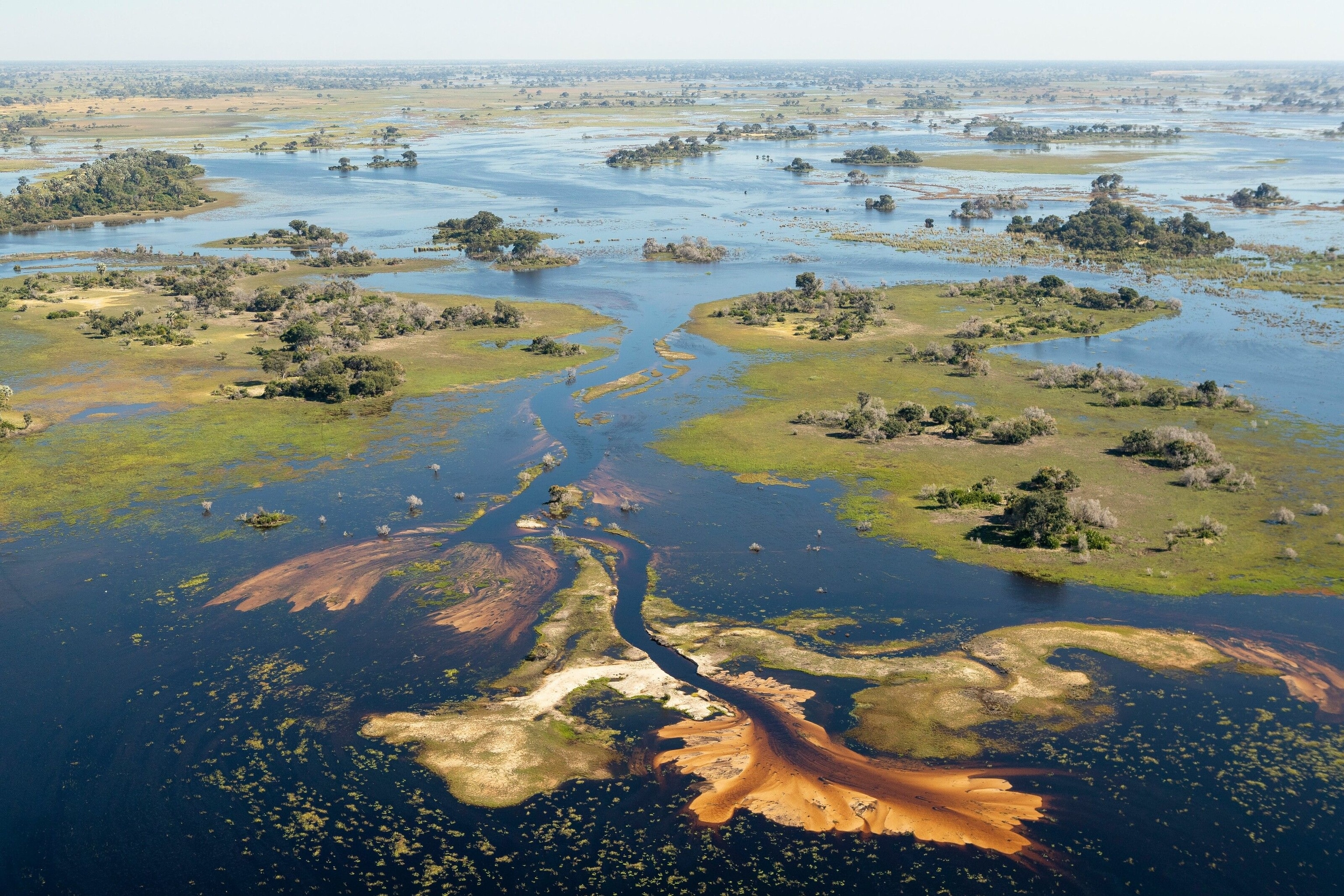
Keitopetse and Tembos deduce that the group of lions here were fully grown and rested in the road for a while before making their way into the mopane groves.
We track the pride’s trajectory for a few miles in the Land Cruiser before finding ourselves completely surrounded by dozens of excited, grazing elephants gorging themselves on the trees.
An encounter with a herd this size is entirely new for me and, going by Keitopetse’s glee, a rare occurrence. It’s a 360-degree panorama of running, trumpeting pachyderms. While I scramble to retrieve the tablet, the herd rumbles past, shaking the earth and the trees. Thankfully, our presence is inconsequential to them, a small detail that helps steel mine and Julie’s nerves as we quell our adrenaline and document each elephant.
Today’s observations will have significant scientific value for Christiaan. When building population maps, it’s important not only to note the location and time of a sighting, but also animal behaviour. Are the animals wary of vehicles? Are they aggressive or ambivalent? Do they react to human presence? Our impressions will, hopefully, inform the routes that safari lodges are encouraged or discouraged from driving in the future. They may also help the government decide where livestock grazing areas are allocated.
My memories of this day will occupy my daydreams for years to come; they’ll take pride of place among my dinner party anecdotes and flash upon my inner eye during dreary commutes. But of far greater and more lasting value is the simple information we collected, data that could have implications for the survival of generations of animals to come.
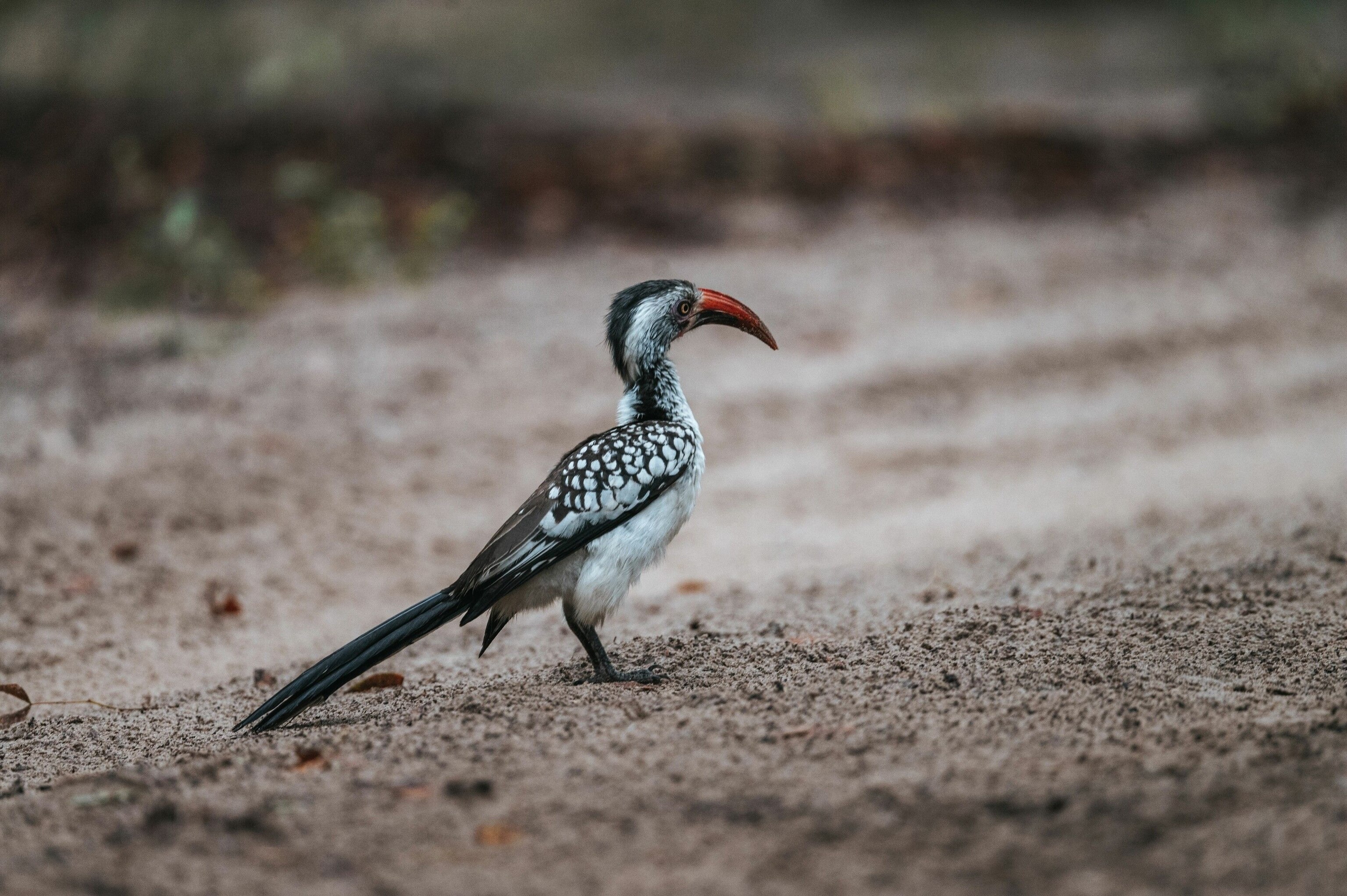
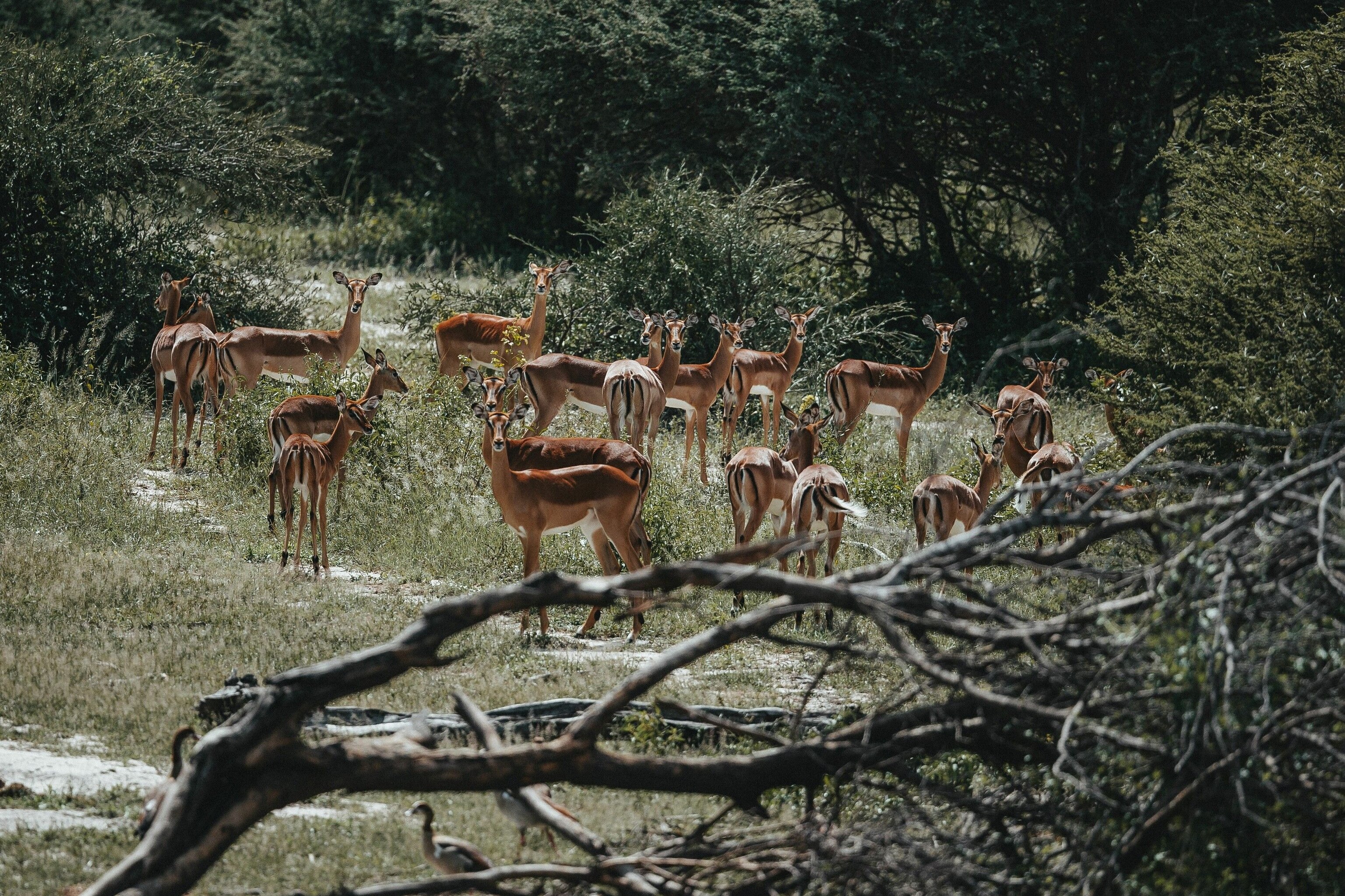
Conflict and confluence
Back at camp, Keitopetse pokes at a dubious stir-fry thrown together by myself and another member of the team. “Yes, there’s conflict between farmers and wildlife,” he tells me, as the African sunset begins to burn orange over our canvas kitchen tent. As usual, our conversation has turned to the issues facing the Delta. “Farmers sometimes kill lions that break into corrals and eat their cattle. Elephants destroy fields planted for food. When they do, children have to come home from school to help fix things and they miss out on learning in class.”
The expert guide is not only a spearhead of Christiaan’s wildlife monitoring effort, he’s also a rancher with his own contingent of cattle and goats. When water shortages affect the region, he’ll be one of the first to feel the impact. And he knows all too well the ways wildlife can impact local livelihoods: although a fence separates the wild Okavango from the nearby farming plots, Keitopetse recently lost most of his livestock to a clan of hyenas. In a rapidly modernising nation with a growing population like Botswana, it’s easy to see how some would regard wildlife as an obstacle to enterprise.
Christiaan whips out a laptop to elaborate on the issue. Lions, he explains, are in the crosshairs: 90% of human conflict with lions occurs within 10 miles of conservation areas, where the big cats roam beyond fences to find cattle. Few get further before they’re killed.
“In Botswana, two of the main ways of making a living are through livestock and tourism linked to wildlife,” he says, kicking off his sandals and inviting the group to gather around a PowerPoint presentation on his screen. “For rural people, livestock and climate change are going to create competition for water, but if we can start planning now, we can alleviate some of that problem.”
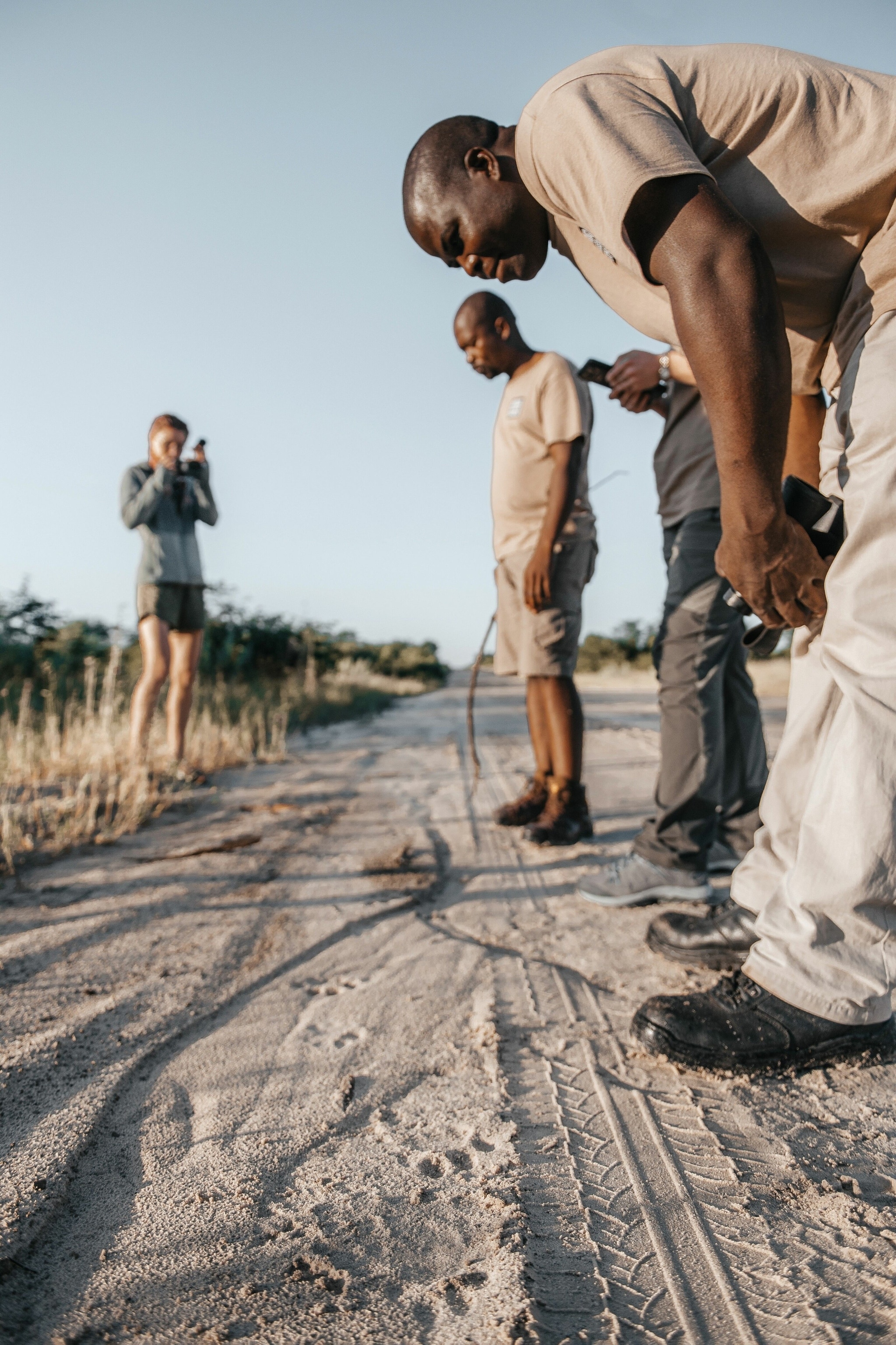
Christiaan’s data seeks to provide the people of Botswana with a roadmap to economic solutions before conflict arises. As he clicks through slides, years of research unfold before us. Botswana, I learn, is home to two of the 10 remaining mega populations of African lion. And lions, it so happens, are a key indicator of the health of the entire ecosystem. “If there’s a disruption in the food chain, lions are one place where you can pick up the response very quickly,” explains Christiaan, his voice weighted by the gravity of work ahead to save the species. “As lions go, so goes the ecosystem.”
A night plagued by dreams of barren grasslands and embattled big cats gives way to a glorious dawn. While we’re out driving in the relative cool of morning, a glimmer of gold catches my eye in the rain-soaked grass as we bump over a verge. “Lion!” I stutter through the open back window, slapping my hand on the roof of the Land Cruiser. “Right there, 11 o’clock!” As Keitopetse pumps the brakes, I realise I’ve finally spotted something that isn’t a guinea fowl. It’s our team’s first lion, a large adult male — the first lion I’ve ever seen in the wild.
The cat glows. Its presence triggers a primal reaction in my bones, a feeling of both awe and fear. In this moment, I begin to understand what Christiaan feels is at stake in the Okavango Delta. Separated from this radiant beast only by the open side of a pickup truck, our team calmly gather the tablets and do what we have been trained to do. We log its location, we measure its distance from the road. We send the information to researchers. Then, star-struck, we move on.
Weeks pass and I’m driven back to Maun. In the hundreds of miles I’ve travelled during my stay with ACE, we managed to add an incredible array of wildlife to the log. We never did find any more lions, but we did see honey badgers, caracals, leopard tortoises and wild cats. By putting ourselves to work for the wildlife, we were able to get boots on the ground in a way that drenched these encounters in meaning for me — more so, I believe, than any curated sighting would have done.
At Maun’s Dusty Donkey Cafe, a smattering of researchers, property developers and miners are dining nearby, all percolating with ambitions of saving wildlife, building wealth or expanding their portfolios in this far-flung corner of Botswana. A few hundred yards away, the single-engine Cessna that introduced me to the Okavango awaits another cluster of tourists searching for a private glimpse of the Delta from the sky.
My understanding of this paradise has evolved over the weeks spent working alongside ardent conservationists and wildlife trackers. What I discovered was a slice of wilderness in desperate need of a helping hand — one that anyone who has the time and determination can provide.
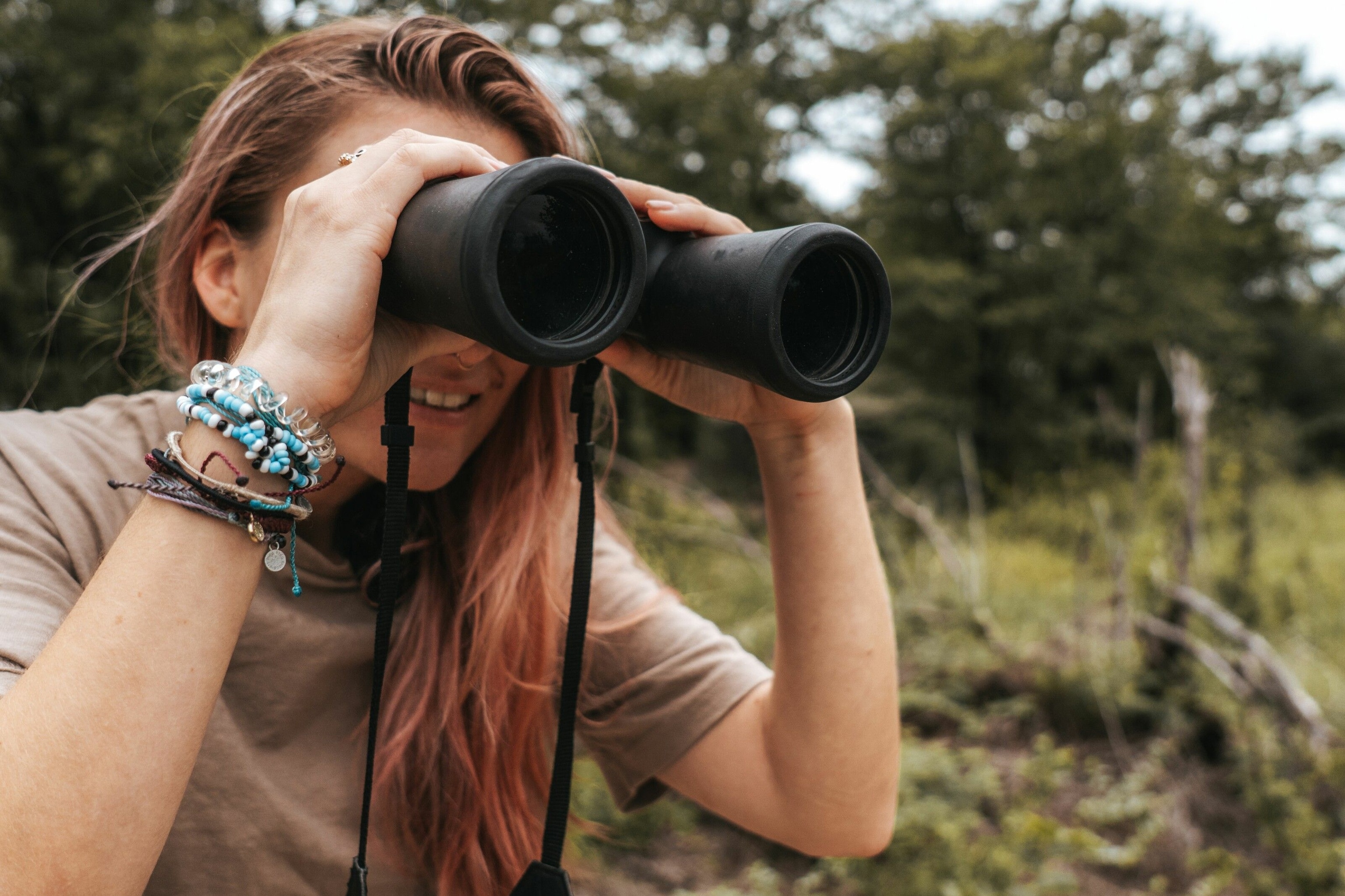
ESSENTIALS
Getting there & around
British Airways and Virgin Atlantic offer direct flights from Heathrow to Johannesburg, from where Airlink offers daily flights onwards to Maun International Airport.
Average flight time: 14h.
Airlines including Kenya Airways, KLM, Emirates and Ethiopian Airlines offer indirect routes to Johannesburg via their respective hubs.
Self-driving tours of the Okavango are permitted, with vehicle hire and guides available in Maun from outfits including Travel Adventures Botswana.
When to go
June to August is peak season for tourism, when the weather is dry, average highs are around 25-30C and animals are easier to spot as they flock to dwindling watering holes. The early months of the year, however, hold a special beauty — average highs exceed 30C and there are some downpours, but crowds are sparse, pans are full and wildflowers are in bloom.
Where to stay
Maun Lodge, from £60.
The Old Bridge Backpackers, from £10.
How to do it
African Conservation Experience arranges voluntourism ventures to northern Botswana as part of the Okavango Wilderness Project, in connection with Christiaan Winterbach and Mankwe, for £2,321 for 14 days, excluding flights.
Published in the September 2022 issue of National Geographic Traveller (UK)
Follow us on social media
Twitter | Facebook | Instagram
